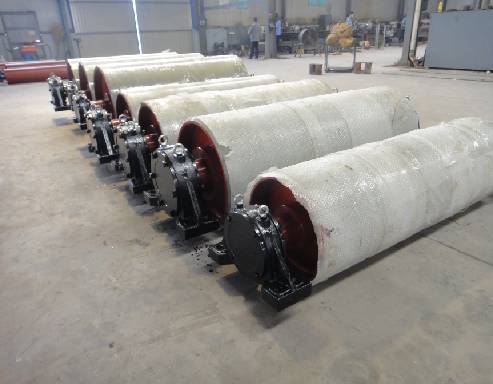 Afrikaans
Afrikaans  Albanian
Albanian  Amharic
Amharic  Arabic
Arabic  Armenian
Armenian  Azerbaijani
Azerbaijani  Basque
Basque  Belarusian
Belarusian  Bengali
Bengali  Bosnian
Bosnian  Bulgarian
Bulgarian  Catalan
Catalan  Cebuano
Cebuano  Corsican
Corsican  Croatian
Croatian  Czech
Czech  Danish
Danish  Dutch
Dutch  English
English  Esperanto
Esperanto  Estonian
Estonian  Finnish
Finnish  French
French  Frisian
Frisian  Galician
Galician  Georgian
Georgian  German
German  Greek
Greek  Gujarati
Gujarati  Haitian Creole
Haitian Creole  hausa
hausa  hawaiian
hawaiian  Hebrew
Hebrew  Hindi
Hindi  Miao
Miao  Hungarian
Hungarian  Icelandic
Icelandic  igbo
igbo  Indonesian
Indonesian  irish
irish  Italian
Italian  Japanese
Japanese  Javanese
Javanese  Kannada
Kannada  kazakh
kazakh  Khmer
Khmer  Rwandese
Rwandese  Korean
Korean  Kurdish
Kurdish  Kyrgyz
Kyrgyz  Lao
Lao  Latin
Latin  Latvian
Latvian  Lithuanian
Lithuanian  Luxembourgish
Luxembourgish  Macedonian
Macedonian  Malgashi
Malgashi  Malay
Malay  Malayalam
Malayalam  Maltese
Maltese  Maori
Maori  Marathi
Marathi  Mongolian
Mongolian  Myanmar
Myanmar  Nepali
Nepali  Norwegian
Norwegian  Norwegian
Norwegian  Occitan
Occitan  Pashto
Pashto  Persian
Persian  Polish
Polish  Portuguese
Portuguese  Punjabi
Punjabi  Romanian
Romanian  Russian
Russian  Samoan
Samoan  Scottish Gaelic
Scottish Gaelic  Serbian
Serbian  Sesotho
Sesotho  Shona
Shona  Sindhi
Sindhi  Sinhala
Sinhala  Slovak
Slovak  Slovenian
Slovenian  Somali
Somali  Spanish
Spanish  Sundanese
Sundanese  Swahili
Swahili  Swedish
Swedish  Tagalog
Tagalog  Tajik
Tajik  Tamil
Tamil  Tatar
Tatar  Telugu
Telugu  Thai
Thai  Turkish
Turkish  Turkmen
Turkmen  Ukrainian
Ukrainian  Urdu
Urdu  Uighur
Uighur  Uzbek
Uzbek  Vietnamese
Vietnamese  Welsh
Welsh  Bantu
Bantu  Yiddish
Yiddish  Yoruba
Yoruba  Zulu
Zulu Creative Solutions for Snub Pulley Design and Application Challenges in Modern Engineering
Understanding Snub Pulleys Function and Applications
In the realm of mechanical engineering and rigging, snub pulleys play a crucial role in modifying the direction and tension of cables or ropes. A snub pulley is a type of pulley that is designed to guide or change the direction of a wire rope while also providing increased control over the tension within the system. This article delves into the construction, functionality, and various applications of snub pulleys, highlighting their significance in industrial and recreational pursuits.
Construction and Design
Snub pulleys vary considerably in design and size, depending on their intended application. Typically, they consist of a grooved wheel, often made from durable materials such as steel, aluminum, or reinforced polymers, mounted on a frame. The groove is designed to accommodate the diameter of the cable or rope, ensuring a tight fit that minimizes slippage. In many cases, snub pulleys are also equipped with swivel features, allowing for 360-degree rotation, which enhances their usability in various orientations.
One of the defining characteristics of a snub pulley is the increased frictional force it provides. Unlike standard pulleys, which primarily reduce the amount of force needed to lift an object, a snub pulley offers additional grip on the rope, enabling better control of the load being lifted or moved. This capability is particularly beneficial in applications requiring fine adjustments to tension or position.
Functionality
The primary function of a snub pulley is to redirect the path of a cable while imparting a tension change on the line. It creates a mechanical advantage by altering the angle of the force applied. When a force is applied to the cable running through the snub pulley, the angle change increases the potential for lifting or pulling heavy loads with less effort. This characteristic makes snub pulleys invaluable in hoisting applications, where manually lifting heavy weights is impractical or impossible.
snub pulley

Additionally, the design of snub pulleys allows them to mitigate cable wear and extend the lifespan of both the cable and the pulley system. The controlled tension and minimized friction translate into smoother operation, thereby reducing the risk of damage and enhancing the overall safety of the lifting operation.
Applications
Snub pulleys find extensive applications across various industries. In construction and heavy machinery, they are used in rigging systems to facilitate the movement of loads, enabling cranes and hoists to operate more efficiently. Their ability to redirect cables at various angles allows for better maneuverability in tight spaces.
In maritime environments, snub pulleys are integral to sailing and other marine applications. They guide rigging lines and enhance sail control, allowing sailors to adjust their sails with precision based on wind conditions. The additional tension control provided by snub pulleys contributes to better performance and handling of the vessel.
Furthermore, snub pulleys have applications in recreational activities such as zip-lining and rock climbing, where they contribute to the safety and efficiency of these pursuits. They allow climbers to manage rope tension effectively, creating a secure and reliable system for ascent and descent.
Conclusion
In summary, snub pulleys are indispensable components in a wide range of mechanical systems, offering enhanced control and efficiency in cable and rope management. Their ability to redirect forces while providing increased friction and tension control makes them vital in various industries, from construction to maritime applications. Understanding the functionality and advantages of snub pulleys can significantly improve the safety and effectiveness of operations that rely on lifting and moving heavy loads. As technology advances, the role of snub pulleys will likely expand, continuing to contribute to both industrial innovation and recreational enjoyment.
-
Revolutionizing Conveyor Reliability with Advanced Rubber Lagging PulleysNewsJul.22,2025
-
Powering Precision and Durability with Expert Manufacturers of Conveyor ComponentsNewsJul.22,2025
-
Optimizing Conveyor Systems with Advanced Conveyor AccessoriesNewsJul.22,2025
-
Maximize Conveyor Efficiency with Quality Conveyor Idler PulleysNewsJul.22,2025
-
Future-Proof Your Conveyor System with High-Performance Polyurethane RollerNewsJul.22,2025
-
Driving Efficiency Forward with Quality Idlers and RollersNewsJul.22,2025





























